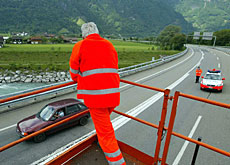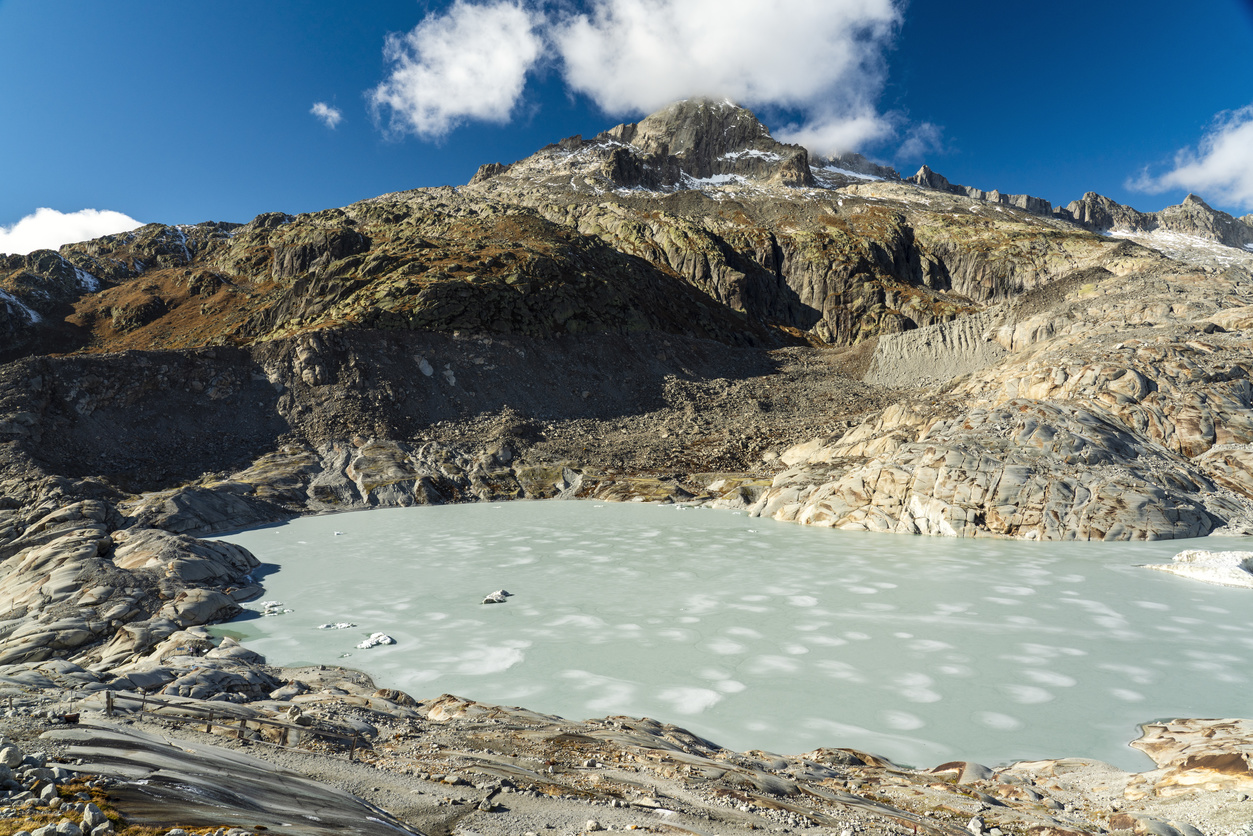
Gotthard closure squeezes Ticino economy

Businesses in the southern canton of Ticino are facing an economic slowdown following the closure of the Gotthard route, Switzerland's main north-south axis.
The last time the route was shut, for two months in 2001, the canton’s economy lost an estimated SFr33 million ($26.8 million). Losses this time are likely to be smaller, but still significant.
Rock falls on May 31 on the motorway leading to the Gotthard tunnel forced the temporary closure of the route, and it is expected to remain shut until at least the beginning of July. Slopes alongside the motorway remain unstable, and measures are being taken to prevent further rock falls.
The first businesses to be hit were those dependent on traffic. On Whit Monday, for example, a service station a few kilometres from the southern entrance to the tunnel posted turnover of SFr15,000. Normally it earns SFr200,000 on a public holiday.
The region’s businesses which sell most of their goods in northern Switzerland and beyond are likely to be hard hit, too, although the economic impact is expected to be less than that caused by the closure of the route in autumn 2001, when a fire in the tunnel caused the deaths of 11 people.
Transport costs
“A small or medium-sized enterprise that wishes to deliver goods to central Switzerland risks having to store them in its warehouse, as the transport costs would make the transaction unprofitable”, says Luca Albertoni, of the Ticino Chamber of Trade, Commerce and Industry.
“For a 40-ton truck, the additional cost is one franc for each additional kilometre travelled, plus SFr150 for each additional hour.
“A heavy goods vehicle that has to travel to Bern via the San Bernardino tunnel [which is further east] would take two hours longer,” explains Waldo Bernasconi, President of the Ticino Chapter of the Swiss Road Transport Association.
In a bid to limit the effects, the Ticino business community is asking for current restrictions on road-based transport to be eased and in particular for lorries be allowed to travel at night.
However, the request has so far been denied both by the Swiss Federal Roads Authority and by canton Graubünden, where the main alternative route to the Gotthard – the San Bernardino – is located.
Supermarkets
Goods coming from north of the Alps to Ticino’s supermarkets are also facing higher transport costs, says Roman Rudel, author of a study on the economic effects in Ticino following the 2001 closure.
Supermarkets south of the Alps depend to a large extent on supplies from warehouses in central Switzerland.
“Of course we have additional costs, even if we have never quantified them,” explains Francesca Sala, spokesperson for the Ticino branch of Migros, the biggest supermarket chain in Switzerland.
She says a large proportion of Migros products – over 50 per cent – is transported by rail.
Tourists
Fears that the closure would deter tourists have so far proved unfounded. “The results for the Whit weekend far exceeded our expectations, and those who had made reservations showed up,” says Marco Boggia, secretary of the hoteliers’ association in Ticino.
People flocked to trains, and the Swiss Federal Railways laid on additional services. Quite apart from the current situation, more and more people are opting to travel by rail when heading south of the Alps.
Tiziano Gagliardi, boss of Ticino Tourism, also paints a positive picture overall, with the sole exception of the Leventina valley. “In this region, which lives off transit tourism, there were many cancellations.
“Luckily, the tunnel should be closed only for a limited period and should reopen before the summer season proper.”
swissinfo, Daniele Mariani
Swiss transport policy aims to move goods traffic from road to rail.
In 1994, voters approved the so-called “Alpine Initiative”, an article enshrined in the Constitution which obliges the government to protect Alps from the negative effects of transit traffic.
The policy led to the construction of two new trans-Alpine rail links through the Lötschberg base tunnel (scheduled to open in 2007) and the Gotthard base tunnel (2016).
With the exception of 2003, heavy traffic on the roads across the Swiss Alps has declined steadily since 2001, when heavier 40-ton trucks were permitted on roads, and new taxes were introduced on trucks.
A total of 1,255,000 heavy goods vehicles crossed the Swiss Alps in 2004.
The law stipulates that by 2009, two years after the opening of the Lötschberg base tunnel, this figure will be reduced to 650,000.
The Gotthard axis currently absorbs over three-quarters of the heavy traffic.

In compliance with the JTI standards
More: SWI swissinfo.ch certified by the Journalism Trust Initiative










































You can find an overview of ongoing debates with our journalists here . Please join us!
If you want to start a conversation about a topic raised in this article or want to report factual errors, email us at english@swissinfo.ch.